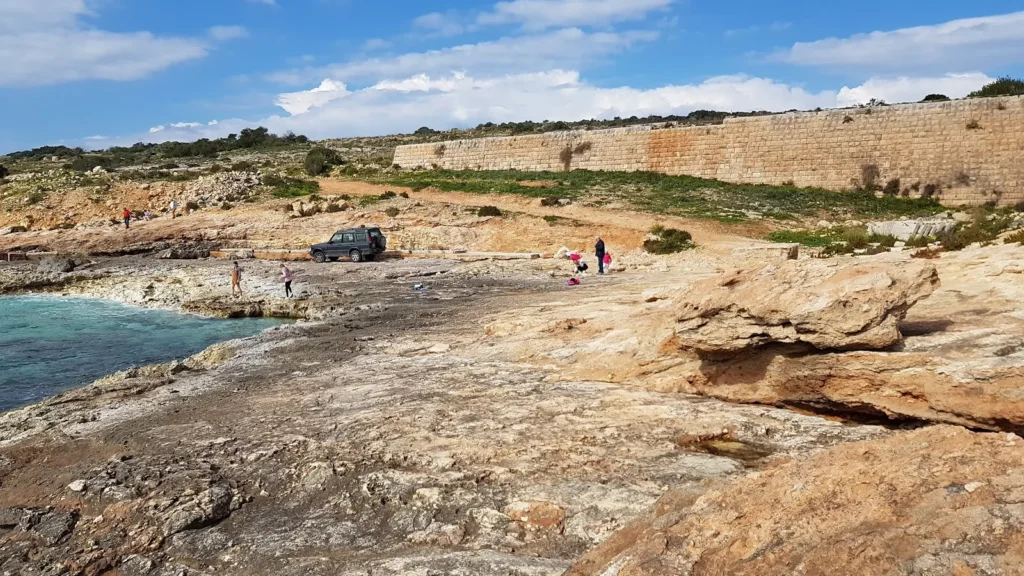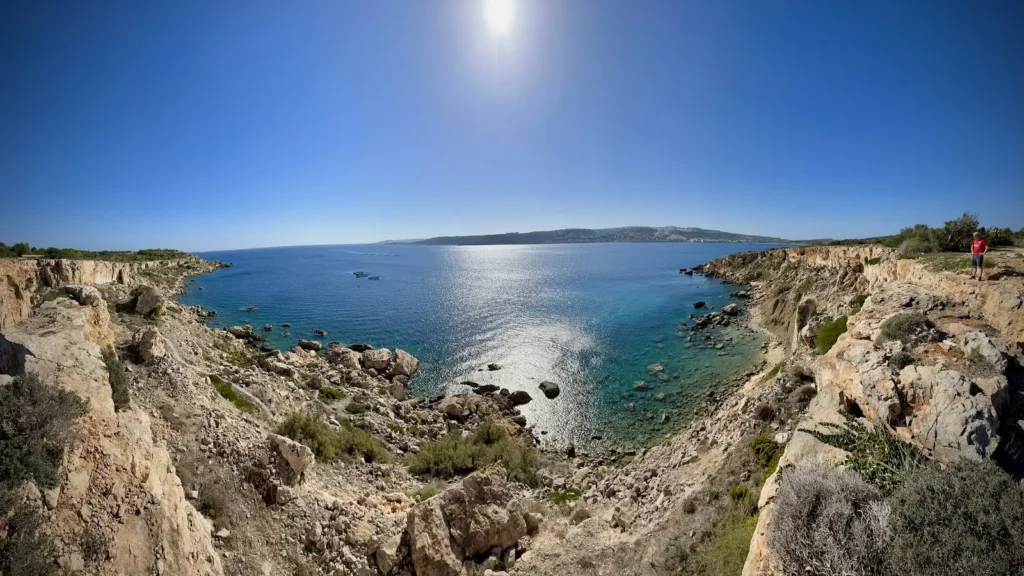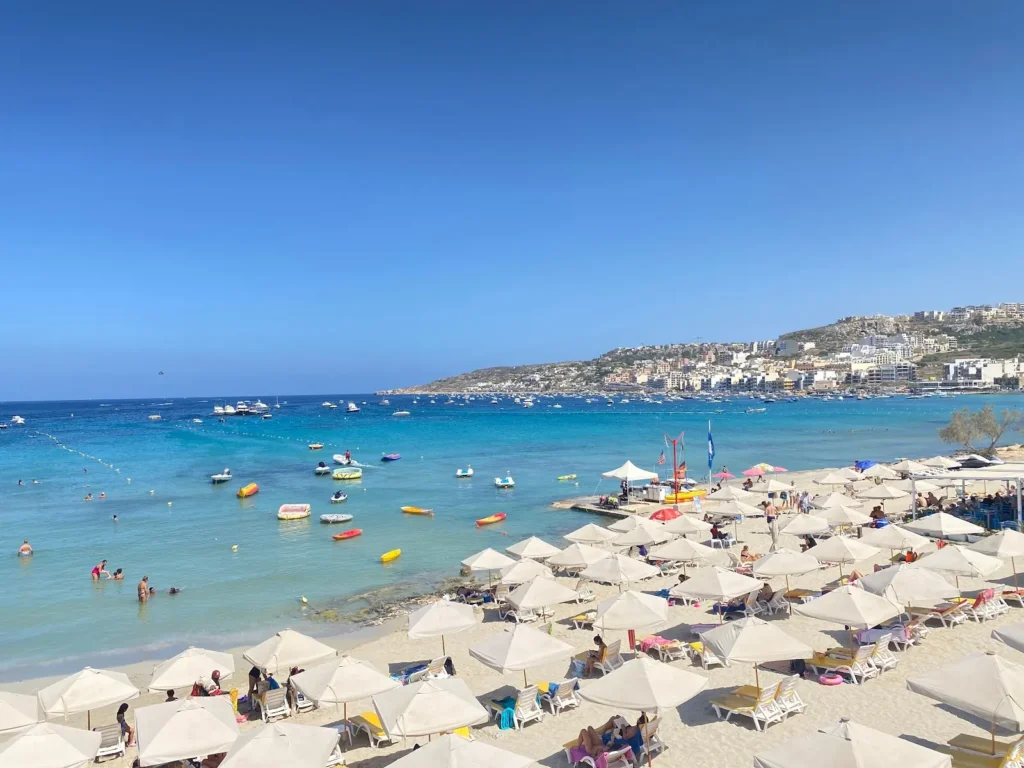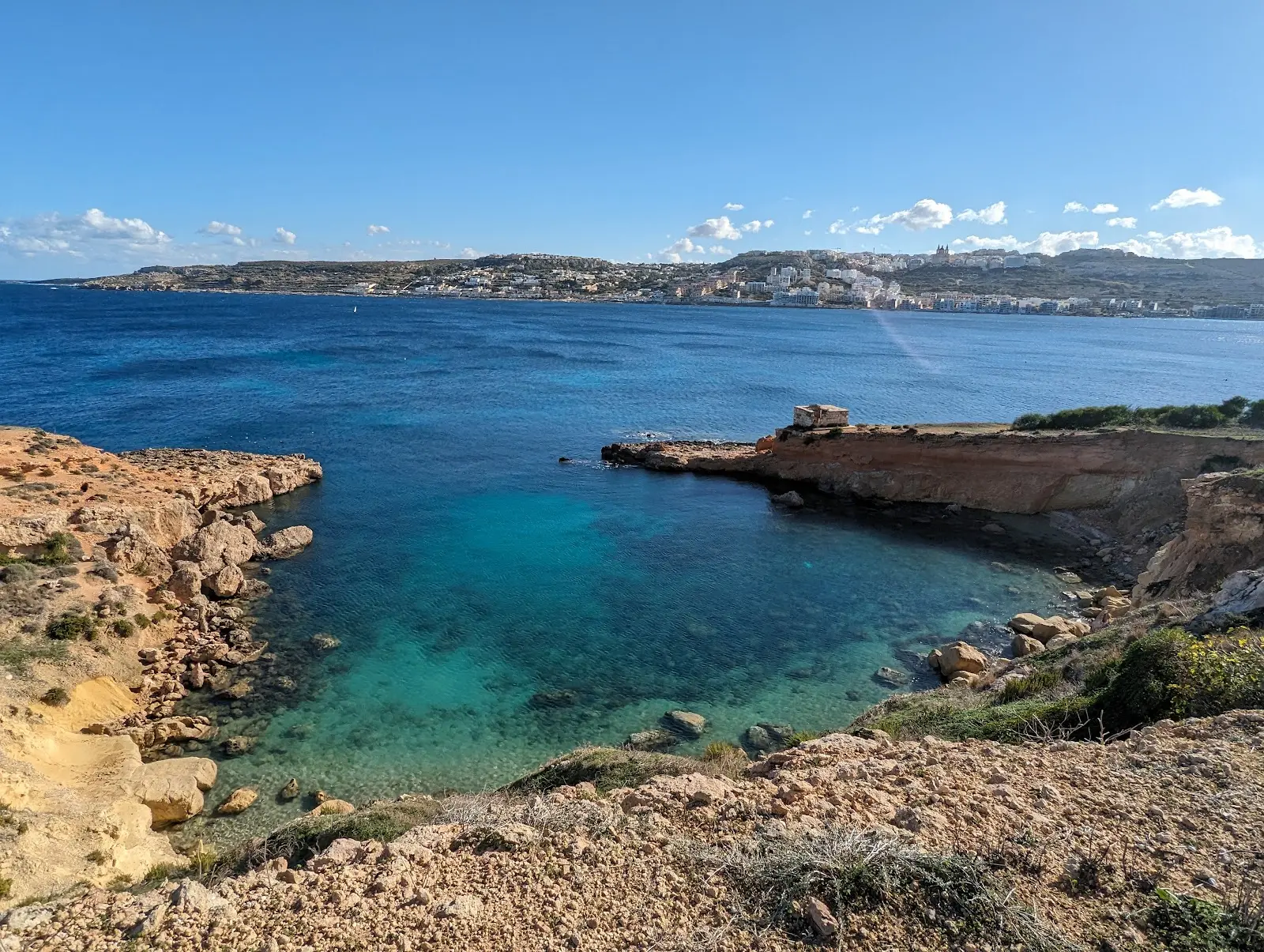Table of Contents
ToggleTa’ l-Imgharqa in Ghadira Bay
Hidden Corners of Mellieħa: Between War Relics and Quiet Shores
Malta, an island with a storied past, is peppered with reminders of its strategic importance during World War II. Many of its lesser-known inlets and rocky coves played roles in coastal defence, observation, and safe mooring. Nestled just off the beaten track, tucked beside the famed sandy stretch of Ghadira Bay, lie two such places that blend natural beauty with echoes of history: the WWII Beach Post at Ta’ l-Imgharqa and the rugged Wall Stone Beach. Visiting them is like stepping into a quieter, more introspective side of the Maltese coast.
The WWII Beach Post at Ta’ l-Imgharqa
Ta’ l-Imgharqa is a small inlet tucked away on the coastline near Mellieħa. At first glance, it’s a peaceful cove — calm turquoise waters surrounded by limestone outcrops and scrubland. But perched on the rocky ledge overlooking the sea stands a crumbling wartime structure: a World War II beach post, also known as a pillbox.
During the 1940s, Malta was on the frontline of the Mediterranean theatre. The island was heavily fortified, with dozens of lookout points and gun posts constructed along its shores to defend against possible sea invasions. The post at Ta’ l-Imgharqa was one of many, built to provide a line of sight across the bay and towards the open sea. From here, soldiers could monitor movements and communicate warnings to nearby positions.
Today, the pillbox lies in partial ruin, weathered by time and salt. Its rounded concrete walls are chipped and scarred, but it still stands as a haunting monument to Malta’s wartime past. The location feels frozen in time — the same sea view that soldiers once scanned now offers a serene panorama for visitors seeking reflection and solitude.
Getting to the site is an adventure in itself. The pathway can be rocky, and sturdy footwear is recommended. The cove is small and secluded, best visited in calm conditions when the sea is gentle. When the sun hits the water, the entire bay lights up in hues of blue and gold, creating a striking contrast with the grey remains of the wartime post. It’s a place that invites both quiet admiration and contemplation.

Wall Stone Beach – The Rugged Neighbour
Just a short walk or drive from Ta’ l-Imgharqa lies Wall Stone Beach, another hidden corner of the Mellieħa coast. Unlike Ghadira Bay’s soft sand, this beach is rocky and uneven, shaped by natural stone formations and concrete slabs that extend into the sea. It’s not the easiest beach to access, but that’s part of its charm — a secluded stretch of coastline far from the bustle of sunbeds and beach bars.
Wall Stone Beach feels raw and unspoiled. The shoreline is dotted with smooth boulders, and the water quickly deepens, making it ideal for snorkeling and underwater exploration. Marine life thrives in the clear waters, and on calm days, you can spot schools of fish darting among the rocks. The bay is also popular with locals who enjoy quiet swims, picnics, or even overnight camping in summer months.
While the beach itself is primarily known for its rugged beauty, traces of wartime history linger here as well. The remains of old fortifications and a small jetty hint at the area’s past strategic role. Standing on the rocks and looking out to sea, it’s easy to imagine how vital these coastal positions once were — both as lookout points and as barriers against enemy forces.
Wall Stone Beach may not offer the conveniences of larger beaches, but it rewards those who seek something authentic. It’s the kind of place where you can hear nothing but the rhythmic slap of waves on stone and the occasional cry of a seabird. The simplicity of it all — the rocks, the sea, the open sky — feels deeply grounding.
A Walk Through Time and Nature
One of the best ways to experience these two spots is by walking the coastal path that connects them. The route winds over rocky terrain and low cliffs, offering stunning sea views at every turn. Along the way, you might pass patches of wild thyme, carob trees, and limestone ledges shaped by centuries of wind and water. It’s a landscape that feels untouched, almost timeless.
From the old beach post, you can see the sweep of Ghadira Bay in the distance, alive with swimmers and sailboats. But as you move toward Wall Stone Beach, the noise fades and the coastline becomes wild and quiet again. The transition is striking — from the liveliness of a family resort to the solitude of an unspoiled cove within the span of a few minutes.
This contrast captures something essential about Malta: an island that balances its vibrant present with a deep and visible past.

Visiting Tips
Wear proper shoes. The terrain is rocky and uneven; flip-flops won’t do.
Go early or late. Sunrise and sunset bring the best light and the fewest visitors.
Bring supplies. There are no kiosks or facilities nearby, so pack water and snacks.
Check the sea conditions. The area is safest and most beautiful when the sea is calm.
Respect the ruins. The pillbox is part of Malta’s heritage; avoid climbing or damaging it.
Use caution when swimming. The rocky seabed drops off quickly in places.

A Quiet Counterpart to GHadira Bay
What makes these places truly special is their contrast with nearby Ghadira Bay — Malta’s largest and most popular sandy beach. While Ghadira is vibrant, social, and full of activity, Ta’ l-Imgharqa and Wall Stone Beach are peaceful, rugged, and reflective. They offer the same clear waters and sunshine, but in an entirely different mood — one shaped by silence, solitude, and history.

Why These Places Matter
The WWII Beach Post at Ta’ l-Imgharqa and Wall Stone Beach are small in scale but rich in meaning. They remind visitors that Malta’s beauty is not just about beaches and sunshine, but also about endurance and memory. These sites tell the story of an island that once stood alone in the face of war and now offers peace where there was once vigilance.
For travelers who love discovering hidden spots and forgotten stories, this stretch of coastline is a perfect find — a place where the past meets the present, and where the sea keeps its secrets beneath the cliffs of Mellieħa.



